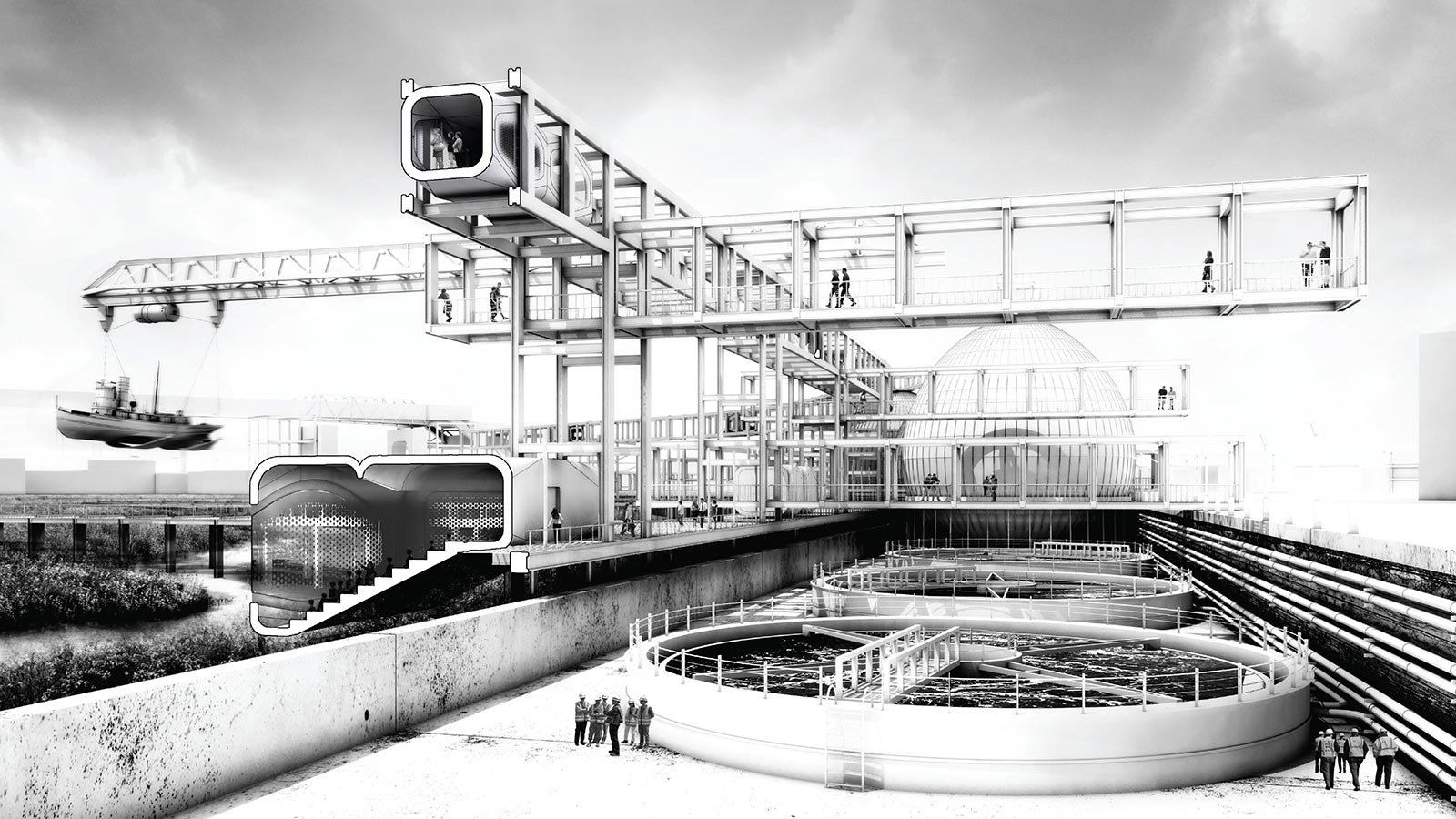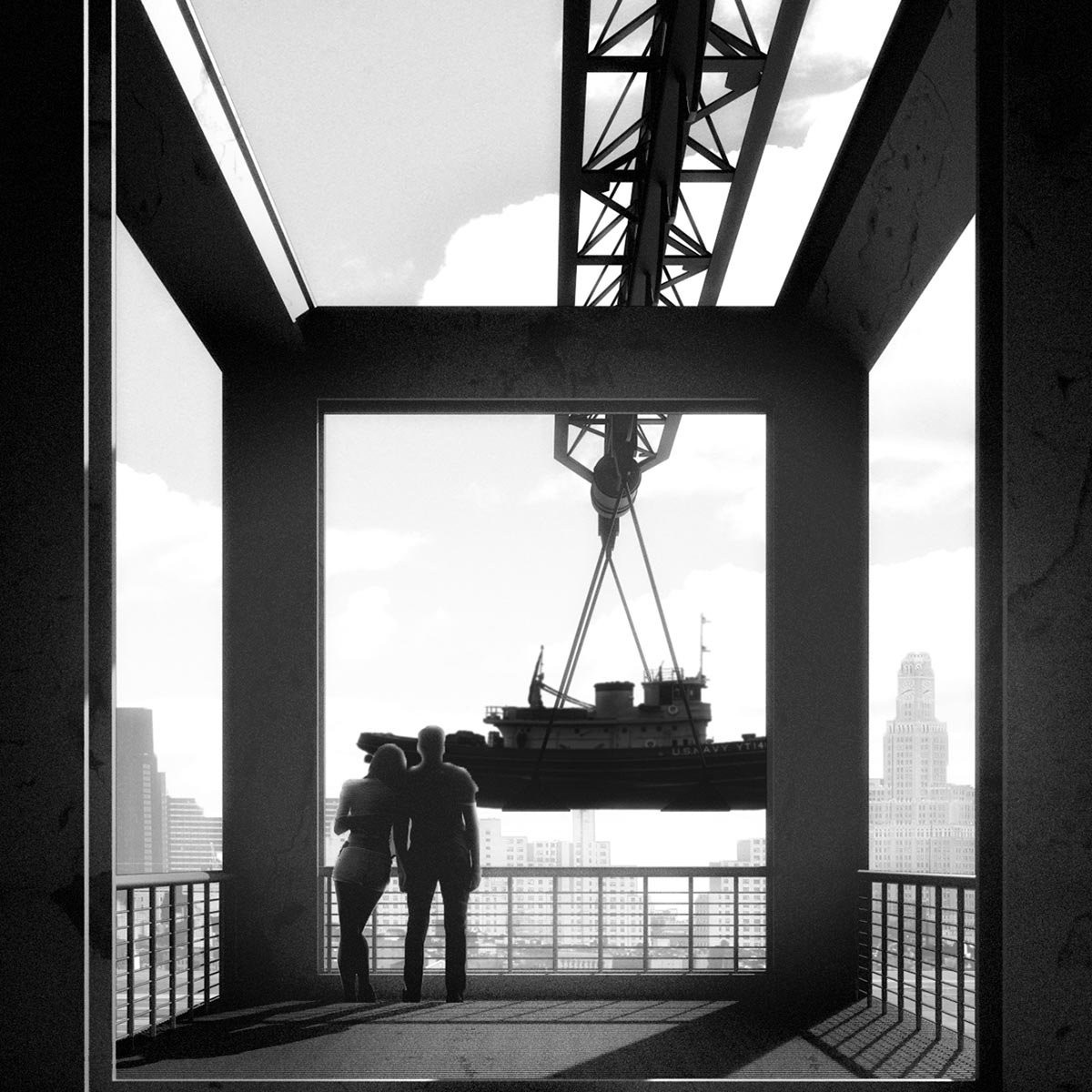Since its colonization by the Dutch in the 17th century, New York’s outer boroughs have been a geography of externalized infrastructure, a landscape of displaced logistics necessary for the functioning of the ever growing metropolis. Now, as the center periphery based expansion of New York washes new people into locations such as the Gowanus the process repeats and pushes these invisible ugly infrastructural systems farther afoot. The Gowanus Canal is a new oppositional edge condition between the expanding center periphery and the migrating periphery, and in lieu of the expulsion of the industrial heritage this marks a moment to discover a critical confluence of culture and industrial urban needs in a singular landscape. Since the introduction of the Gowanus Canal onto the National Priorities list for the EPA and its designation as a Superfund site in 2010, it has raised the public consciousness of the toxicity of the waterway and focused needed attention on ecological relief of this post-industrial watershed's runoff and storm-water infiltration system. Currently, New York’s 14 water treatment plants are only capable of treating all of the waste water produced during dry days; but during wet weather, the plants are subject to twice the volume forcing a discharge into local waterways such as the Gowanus in Combined Sewer Overflows. There are a total of ten CSO outfalls that can discharge to the Canal and three storm sewer outfalls.
The Field Station of the Industrial Sublime is situated as a linear object on this edge condition and incorporates two infrastructural systems. The historic canal will be drained to serve as waste water treatment infrastructure for Brooklyn, and Gowanus' adjacent ghost streams will be reclaimed as wetlands to aid in storm-water mitigation. The reintroduction of this historic ghost stream adjacent to the canal will increase the holding capacity of the watershed during large storm events and naturally filter the street runoff from Park Slope before it can reach Gowanus Bay. The proposed treatment plant, will work in coordination with the natural wetland system to clean the canal. The passage which the canal once allowed is substituted by a crane emerging from new industrial architecture, providing portage across the wetland system. Cultural amenities and community-oriented programmatic spaces are immersed within the industrial superstructure, creating pedestrian walks meandering through both class-rooms, auditoria and waste water digestion tanks. The Field station will unite the Gowanus watershed at a singular logistic landscape, a confluence of two kinds of infrastructure, cultural and physical. These systems are both needed for the expanding urban conglomeration. The Gowanus Canal will serve as an infrastructural landscape; a spine that will both strengthen the hydrological and storm systems and support Brooklyn's culture and education, creating a foundation from which sustainable development can emerge along the Gowanus and beyond. The Field Station of the Industrial Sublime is both a solution and a memorial to the problem that necessitated it.
/ Drawings
/ Images
/ Project Team
Jonathan A. Scelsa, Jennifer Birkeland, Erin Wythoff, Will Di Bernardo, + Isaac W. Stein
/ Project Info
/ Project Type - Competition Winner and Exhibition, Axis Civitas
/ Exhibition - Brooklyn, New York
/ Client - Gowanus by Design
/ Project Date - 2015
/ Publication - ACSA National 2018 Proceedings - The Ethical Imperative





